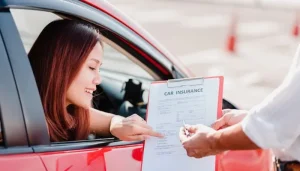For those who have cars, liability coverage is not just some insurance language but a form of security! But what exactly do you know about it? In simple terms, covered or insured persons are able to collect damages from other injured parties in an accident occurring under their fault with the assistance of this insurance policy. It is similar to insurance, but instead of a firm, you are the one covering the insurance. After all, there is always a time when a lot goes wrong, and that isn’t an ideal situation. Yes, liabilities are critically important! However, there are also boundaries, which, if you have a clear idea about them, would save you a huge amount of money from potential legal trouble.
The Importance of Liability Coverage for Drivers
You might be asking yourself: Why is there so much talk about liability insurance coverage? To illustrate it, to clarify, let’s say you caused an accident that damaged the other party’s vehicle or even personally injured someone. Now, if there were no liability coverage, you would have to pay those expenses, which can run into the thousands or tens of thousands. That’s why, most of the time, drivers’ liability insurance is compulsory, as it is one of the requirements in most states. But even aside from this, it is simply a smart thing to do. It should not be a single error made while driving that brings you down financially.
Getting to Know Liability Coverage Basics
Let us begin our journey in understanding the components associated with liability coverage. There are two lines of general concern from the perspective of the liability that an insured in an accident may be exposed to. The initial one is the liability for bodily injury, which involves the known and reasonable costs of medical care and lost incomes of all those people who incurred injuries during an accident that the insured may have been involved in. Next, there’s liability for damage to property, which performs the function of bearing the expenses incurred in a case when the vehicle or property of the other person involved gets damaged. One thing, however, is important to note, and that is that these liabilities do not cover injuries sustained by you or damage to your own vehicle. A different type of insurance would deal with this.
Other Available Liability Coverage Options
Umbrella coverage is a type of insurance that can be combined with basic coverage, and it is best suited for individuals that would like to extend their liability limit after an accident. If you want to include more than the bare minimum requirements, then you can opt for this insurance. If all the members of your family are driving a vehicle, you can get better coverage options for your family as well. These options ensure you’re not left high and dry in case it ends up being an expensive accident.
Considerations Influencing the Cost of Liability Insurance
You probably didn’t notice this, but how come one of your friends pays a different amount of liability coverage while owning the same car as you do? There are many factors that an insurer looks at, which include any prior claims, age, residence, and more, as well as the car in which you drive. Statistically, younger people and people with a bad history of driving tend to incur much more losses, and hence, their premiums are higher. Another determinant of rates is a car’s address because the higher the parking place’s chance of accidents or thefts, the more it drives up your costs. It’s like a puzzle, and each and every piece helps in determining your rates.
Comprehensive Coverage And Liability Coverage
This is definitely one of the most googled questions: Is it better to have full coverage or are there any restrictions and I can go with liability-only coverage? One can think of liability insurance as a rather economical key word that should be considered as the absolute minimum something to get and have. It covers only the cost of losses to other persons except the cost of damage to your car or bodily injury that you may sustain in the case of a collision of vehicles.
Full coverage contains all that plus the liability insurance and also pays for the repairs of your car after an accident and also pays for the repairs of the car for any other reasons except for being in an accident. If you still have a loan or lease on your car, then the full coverage would nearly amount to a necessity.
Benefits in Getting Liability Coverage Limit Increase
Certainly, sticking to the bottom of the barrel in terms of a state’s minimum requirements may lessen the amount that you have to part with as a premium. But what is the drawback? Yes, a greater upgrade of liability limits indeed secures you better where it matters and where the airbag is deployed. Consider the following case: let’s consider a situation whereby, owing to your negligence, you caused an auto accident and the medical care needed as a result goes a bit too far—let us say over a hundred thousand dollars. Now, if I say that there is a limit to a liability amount that is fifty thousand dollars, I think you have already understood. You are able to claim the rest. With greater limits, the backup of insurance makes you feel confident. This is the rest of my mind! That is priceless.
Reassess Your Liability Insurance Coverage
Well, now that you’ve been clued in, when’s a good occasion to look at the liability coverage? According to the above, all the other rules may still cite good timing. Or rather, while checking your policy, make sure it is in synchronisation with life-changing events such as buying a new car, relocating to a new state, or getting married. Also, it is also imperative to fix a date for your agent and request him for this! Intern, if there is a rate that you were keen on amending, you might as well not waste time in doing it so that you can enjoy the rates.
Key Features Of Comprehensive Liability Insurance
Liability coverage should not simply be a matter of concern with an individual’s legal duties. Rather, it aims at making a person confident enough to drive without the fear of putting him or anyone else in danger. Having understood all the materials provided to you on insurance, including what the liability insurance coverage entails or how you can purchase extra limits or addons to improve your coverage, you are now in a better position to make decisions that pertain to buying insurance. As a word of advice, it wouldn’t hurt if you spent a couple of minutes right now looking into the particulars of your insurance policy because this right action alone may help you save so much in the future!
FAQs
1. Are there states where the coverage of liability is not available?
In the majority of those states that comprise the USA, coverage of liability is functional. Minimum requisites, however, vary; therefore, as always, make sure to look at the legislation from your area.
2. Will my collision coverage pay to have my car repaired?
You did not provide any collision risk. A no will suffice quite adequately, as W liability coverage only pays for damages or injuries that you have caused an individual. One can only protect their own vehicle by taking collision and comprehensive insurance.
3. How much money is needed to buy liability insurance?
The amount of money to be spent on liability insurance depends on many factors, including but not limited to the place where you stay, the number of years you have spent on driving, and even the type of vehicle you own. It is important to note that a majority of coverage would be in the range of $500–$1000 per year at the minimum.
4. Is it possible for me to boost my liability coverage levels?
Sure! In fact, for further damage coverage levels, boosting ultimately protects individuals more, while peace of mind boosting is the economical approach to take.



